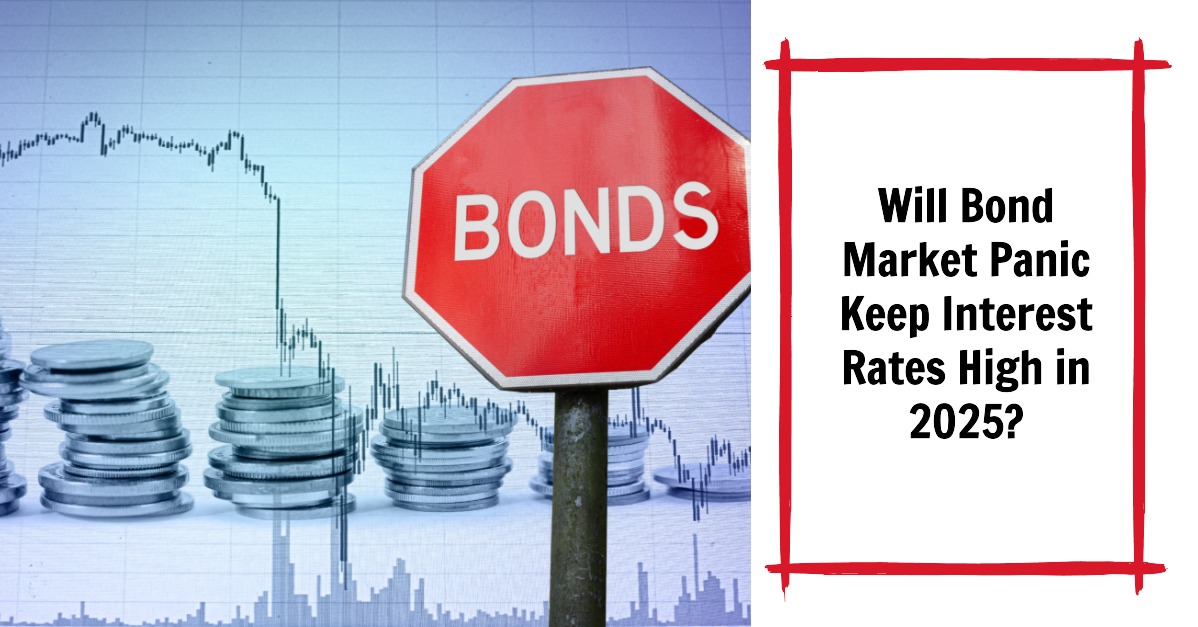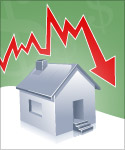The recent turmoil in the bond market has understandably left many wondering about the future of interest rates. As of May 12, 2025, the 10-year U.S. Treasury yield stood at a notable 4.382%, signaling a period of stress in this critical sector of the global financial system. The big question on everyone's mind, and what we'll delve into here, is whether this bond market panic will keep rates high. My take is that while the immediate reaction has been an increase in yields and thus interest rates, the long-term trajectory is far from set in stone and hinges on a complex interplay of factors.
Will the Bond Market Panic Keep Interest Rates High in 2025?
To really understand what's happening now and what might happen next, it's important to grasp some fundamental concepts about the bond market. Think of bonds as essentially IOUs. When governments or companies need to borrow money, they issue these bonds. Investors who buy them are lending money and in return, they get periodic interest payments, known as coupons, and the original amount they lent back when the bond matures.
Now, here's a key point: bond prices and their yields move in opposite directions. When a lot of people want to sell bonds (increasing supply or pressure), the price goes down. Because the fixed coupon payments are now a larger percentage of the lower price, the yield – the actual return an investor gets – goes up.
The 10-Year U.S. Treasury yield is a really big deal because it acts as a benchmark for so many other interest rates in the economy. This includes things like mortgage rates, the interest you pay on corporate loans, and even how much the government itself has to pay to borrow money. A higher 10-year Treasury yield generally tells us that investors want more compensation for holding onto longer-term debt. This could be because they expect higher inflation down the road, they see more economic uncertainty, or they perceive a greater risk.
What's Causing the Current Bond Market Turmoil?
Lately, the bond market has definitely been a bit rocky. We've seen some pretty significant and rapid sell-offs, leading to those higher Treasury yields. From my perspective, this isn't just one thing happening; it's a combination of different forces all hitting at once:
- Trade Tensions: Remember those back-and-forth tariffs between the U.S. and China? Well, they're still casting a shadow of uncertainty over the global economy. When businesses and investors get nervous about trade wars, they tend to become more cautious. We've seen some investors pulling back from assets they see as riskier, and that can sometimes include selling off bonds, even U.S. Treasuries which are usually seen as a safe harbor in stormy times. This selling pressure pushes bond prices down and yields up.
- Debt Ceiling Concerns: Earlier in 2025, the U.S. government bumped up against its debt ceiling. This is like reaching the limit on your credit card. While the Treasury Department has been using what they call “extraordinary measures” to keep things running, it creates a sense of unease. A limited supply of new Treasury bonds being issued can actually lead to higher yields because the demand for existing bonds might outstrip what's available. It introduces a bit of a liquidity squeeze.
- Federal Reserve Policy Expectations: The Federal Reserve, our central bank, plays a huge role in all of this. They've already cut interest rates three times in 2024, bringing their main rate (the federal funds rate) down to a range of 4.25%-4.50%. Now, everyone's trying to guess what they'll do next. Some folks are worried that if inflation doesn't cool down or if the economy stays surprisingly strong, the Fed might not cut rates as much or as quickly as some hope. This expectation of potentially higher rates for longer can also push bond yields higher.
It's been a bit unusual recently because we've seen both the stock market and the bond market declining at the same time. Usually, when stocks get shaky, investors tend to flock to the relative safety of bonds. But the factors I've mentioned above have kind of messed with that traditional pattern, making people even more concerned about the stability of the bond market.
Here's a quick look at some of the drivers:
| Factors Driving Bond Market Panic | Impact on Yields |
|---|---|
| Trade Tensions Increase | Yields increase due to risk aversion and economic uncertainty. |
| Debt Ceiling Concerns | Yields increase due to reduced bond supply and liquidity issues. |
| Fed Policy Expectations | Yields increase if investors anticipate higher rates for longer. |
How Does This Impact Interest Rates for Everyone Else?
The bond market's ups and downs have a very real effect on the interest rates we see in our daily lives:
- Mortgages: When those Treasury yields go up, so do mortgage rates. We've already seen some back and forth, with the average 30-year fixed rate hovering around 6.64% in early 2025. While that's a bit lower than the 7.04% we saw in late 2024, it's still quite a bit higher than what we were used to before the pandemic. For people looking to buy a home, this means higher monthly payments.
- Consumer and Business Loans: Things like credit card interest rates, car loan rates, and the cost for businesses to borrow money are also tied to those Treasury yields. If yields stay high, it becomes more expensive for individuals to borrow and for businesses to invest and expand.
- Economic Growth: Higher interest rates can act like a brake on the economy. When borrowing becomes more expensive, people might be less likely to spend, and businesses might put off investments. This is a real concern, especially when we're already dealing with global trade issues and other uncertainties.
The current 10-year Treasury yield of 4.382% is definitely higher than the lows we saw in 2024, but it's also not the highest we've seen historically during periods of market stress. However, the speed at which we've seen these yields rise recently is what's making people nervous about the possibility of sustained high rates.
So, Will Rates Actually Stay This High?
This is the million-dollar question, isn't it? Whether this bond market panic will translate into persistently high interest rates over the long haul depends on how several key factors play out:
- The Resolution of Trade Tensions: If the U.S. and China can actually reach a solid trade agreement, I think that would be a big sigh of relief for investors. It could boost confidence and reduce the need for those higher yields as a safety cushion. Easing tariffs could also help bring down some of those inflationary pressures we've been seeing, which might give the Fed more room to cut rates. On the flip side, if trade tensions get even worse, investors might continue to demand higher yields to compensate for the added economic uncertainty.
- Getting Past the Debt Ceiling Drama: A swift and clean resolution to the U.S. debt ceiling issue would bring some much-needed stability to the Treasury market. Knowing there's a steady supply of bonds should help ease those liquidity concerns and potentially bring yields down. However, if there are more political battles and delays, that could keep the market on edge and yields elevated.
- What the Federal Reserve Does Next: The Fed's moves are going to be crucial. As of March 2025, they've held their key interest rate steady. Their own forecasts suggest they might cut rates twice more in 2025, which, if it happens, could help bring down those longer-term bond yields. But, and this is a big but, if inflation proves to be stickier than they hope or if the economy stays stronger than expected, the Fed might decide to hold off on those cuts, meaning rates could stay higher for longer.
- What the Market is Expecting: Right now, the market seems to be pricing in a scenario where rates might not fall dramatically in 2025, but they're also not expected to shoot way up. For instance, I've seen predictions from Bankrate suggesting the Fed might cut rates three more times in 2025. The Mortgage Bankers Association is also forecasting a gradual decline in mortgage rates into 2026. However, these are just forecasts, and they all assume that some of these current uncertainties will start to ease. If those trade tensions or debt ceiling issues drag on, things could look quite different.
- The Global Economic Picture: If we see a slowdown in the global economy, that could actually increase demand for safe assets like U.S. Treasuries, which could, counterintuitively, push yields lower. But if the U.S. economy remains resilient while other parts of the world struggle, investors might still demand higher yields here to account for potential inflation risks.
Here's a summary of how these factors might influence future rates:
| Factors Influencing Future Rates | Likely Impact |
|---|---|
| Trade Agreement | Lower yields and interest rates. |
| Debt Ceiling Resolution | Lower yields if resolved; higher if there are delays. |
| Fed Rate Cuts | Lower yields if they are implemented. |
| Global Slowdown | Lower yields due to increased demand for safe assets. |
| Persistent Inflation | Higher yields if the Fed holds off on rate cuts. |
What the Experts Are Saying and My Own Thoughts
When I look at what various experts are saying, it's clear there's no single, unified view. Some optimists believe this bond market jitters are just temporary. They think that once those trade issues calm down and the debt ceiling is sorted, we'll see investor confidence bounce back, leading to lower yields and interest rates. The Fed's projected rate cuts also lend some support to this idea.
On the other hand, the pessimists are more worried. They point to ongoing geopolitical risks and the stubbornness of economic uncertainty as reasons why yields might stay elevated. If that trade war escalates or if inflation doesn't come down as much as hoped, the Fed might feel stuck keeping rates higher, which would put more pressure on bond prices.
Personally, I think the recent behavior of the bond market suggests that investors are bracing for a scenario where rates might stay higher for a bit longer than we initially anticipated. However, I don't necessarily see this as meaning rates will stay at these exact levels forever. Instead, it feels like the market is adjusting to a new reality where uncertainty is just a bigger part of the equation.
In Conclusion
The recent bond market panic has definitely played a role in pushing Treasury yields higher, and this, in turn, affects the interest rates we see throughout the economy. However, whether this panic will lead to a sustained period of high rates is still very much up in the air.
If we see some positive developments – like a resolution to trade disputes and a smooth handling of the debt ceiling – there's a good chance that bond yields could stabilize or even decline, which would eventually lead to lower interest rates. But if these issues persist or get worse, we could be looking at a scenario where borrowing costs remain elevated for consumers and businesses.
Right now, the Federal Reserve seems to be treading carefully, holding rates steady but signaling a potential for future cuts. However, the market's reaction suggests that there's still a lot of nervousness about what the future holds.
Ultimately, the direction of interest rates will depend on how those global trade issues, our domestic fiscal policy, and the Fed's response to economic data all come together. While the bond market's recent volatility has created some short-term pain, the long-term impact on rates will really hinge on how these bigger, broader forces play out.
Secure Real Estate Before Rates Rise Further
With the bond market in turmoil and interest rates under pressure, now may be the best time to lock in cash-flowing rental properties before borrowing costs climb even higher.
Norada provides access to fully managed, turnkey real estate investments in resilient markets—ideal for navigating economic uncertainty.
HOT NEW LISTINGS JUST ADDED!
Speak to a Norada investment advisor today (No Obligation):
(800) 611-3060
Recommended Read:
- Interest Rate Predictions for 2025 by JP Morgan Strategists
- Interest Rate Predictions for Next 2 Years: Expert Forecast
- Fed Holds Interest Rates But Lowers Economic Forecast for 2025
- Fed Indicates No Rush to Cut Interest Rates as Policy Shifts Loom in 2025
- Fed's Powell Hints of Slow Interest Rate Cuts Amid Stubborn Inflation
- Fed Funds Rate Forecast 2025-2026: What to Expect?
- Interest Rate Predictions for 2025 and 2026 by NAR Chief
- Market Reactions: How Investors Should Prepare for Interest Rate Cut
- Interest Rate Predictions for the Next 3 Years
- Impact of Interest Rate Cut on Mortgages, Car Loans, and Your Wallet
- Interest Rate Predictions for Next 10 Years: Long-Term Outlook
- When is the Next Fed Meeting on Interest Rates?
- Interest Rate Cuts: Citi vs. JP Morgan – Who is Right on Predictions?
- More Predictions Point Towards Higher for Longer Interest Rates




